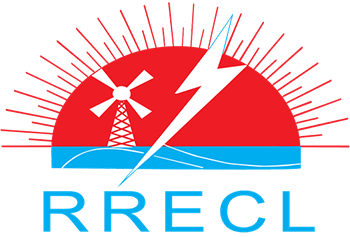Hydropower also known as water power, is the use of falling or fast-running water to produce electricity or to power machines. This is achieved by converting the gravitational potential or kinetic energy of a water source to produce power. Hydropower is a method of sustainable energy production. Hydropower is now used principally for hydroelectric power generation, and is also applied as one half of an energy storage system known as pumped-storage hydroelectricity.
Pumped Hydro Storage
Pumped-storage hydroelectricity (PSH), or pumped hydroelectric energy storage (PHES), is a type of hydroelectric energy storage used by electric power systems for load balancing. The method stores energy in the form of gravitational potential energy of water, pumped from a lower elevation reservoir to a higher elevation. Low-cost surplus off-peak electric power is typically used to run the pumps. During periods of high electrical demand, the stored water is released through turbines to produce electric power. Although the losses of the pumping process make the plant a net consumer of energy overall, the system increases revenue by selling more electricity during periods of peak demand, when electricity prices are highest. If the upper lake collects significant rainfall or is fed by a river then the plant may be a net energy producer in the manner of a traditional hydroelectric plant.
Pumped-storage hydroelectricity allows energy from intermittent sources (such as solar, wind) and other renewables, or excess electricity from continuous base-load sources (such as coal or nuclear) to be saved for periods of higher demand. The reservoirs used with pumped storage are quite small when compared to conventional hydroelectric dams of similar power capacity, and generating periods are often less than half a day.
Pumped storage is by far the largest-capacity form of grid energy storage available, and, as of 2020, the United States Department of Energy Global Energy Storage Database reports that PSH accounts for around 95% of all active tracked storage installations worldwide, with a total installed throughput capacity of over 181 GW, of which about 29 GW are in the United States, and a total installed storage capacity of over 1.6 TWh, of which about 250 GWh are in the United States.[3] The round-trip energy efficiency of PSH varies between 70%–80%, with some sources claiming up to 87%. The main disadvantage of PSH is the specialist nature of the site required, needing both geographical height and water availability. Suitable sites are therefore likely to be in hilly or mountainous regions, and potentially in areas of natural beauty, making PSH susceptible to social and ecological issues. Many recently proposed projects, at least in the U.S., avoid highly sensitive or scenic areas, and some propose to take advantage of "brownfield" locations such as disused mines.
Basic Principle
Power distribution, over a day, of a pumped-storage hydroelectricity facility. Green represents power consumed in pumping; red is power generated.
At times of low electrical demand, excess generation capacity is used to pump water into the upper reservoir. When there is higher demand, water is released back into the lower reservoir through a turbine, generating electricity. Reversible turbine/generator assemblies act as a combined pump and turbine generator unit (usually a Francis turbine design). Variable speed operation further optimize the round trip efficiency in pumped hydro storage plants. In micro-PSH applications, a group of pumps and Pump As Turbine (PAT) could be implemented respectively for pumping and generating phases. The same pump could be used in both modes by changing rotational direction and speed: the operation point in pumping usually differs from the operation point in PAT mode.
Economic Efficiency
Taking into account evaporation losses from the exposed water surface and conversion losses, energy recovery of 70–80% or more can be achieved. This technique is currently the most cost-effective means of storing large amounts of electrical energy, but capital costs and the presence of appropriate geography are critical decision factors in selecting pumped-storage plant sites.
The relatively low energy density of pumped storage systems requires either large flows and/or large differences in height between reservoirs. The only way to store a significant amount of energy is by having a large body of water located relatively near, but as high above as possible, a second body of water. In some places this occurs naturally, in others one or both bodies of water were man-made. Projects in which both reservoirs are artificial and in which no natural inflows are involved with either reservoir are referred to as "closed loop" systems.
Small-scale facilities
Smaller pumped storage plants cannot achieve the same economies of scale as larger ones, but some do exist, including a recent 13 MW project in Germany. Shell Energy has proposed a 5 MW project in Washington State. Some have proposed small pumped storage plants in buildings, although these are not yet economical. Also, it is difficult to fit large reservoirs into the urban landscape. Nevertheless, some authors defend the technological simplicity and security of water supply as important externalities.
*Source-Wikipedia.



